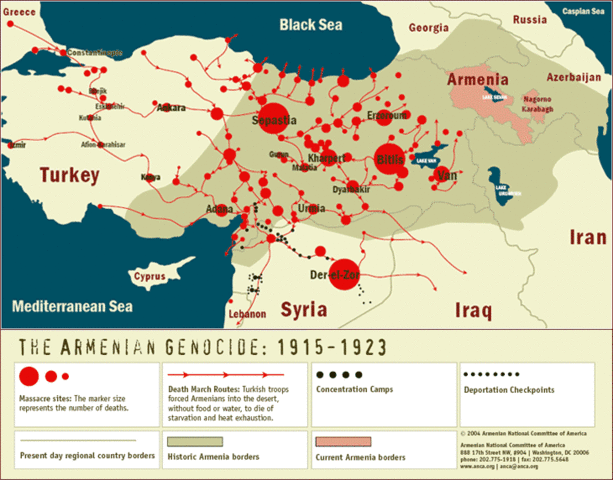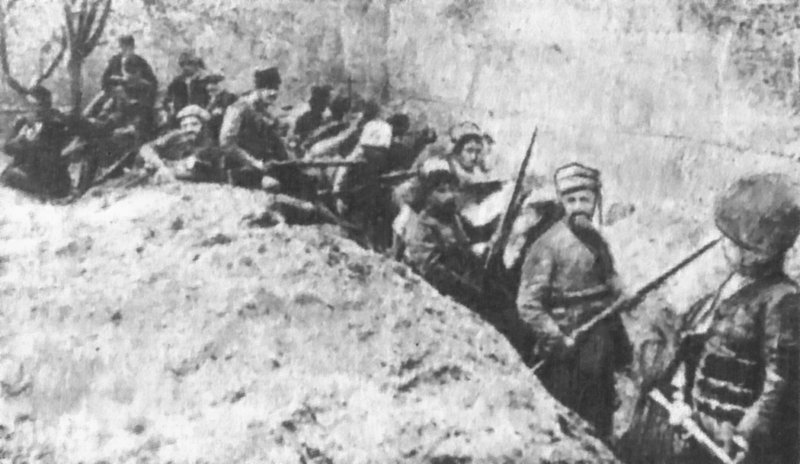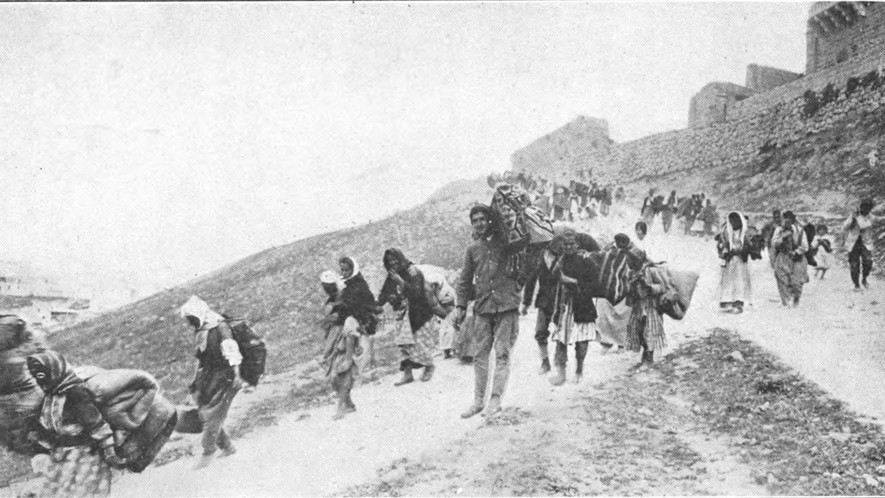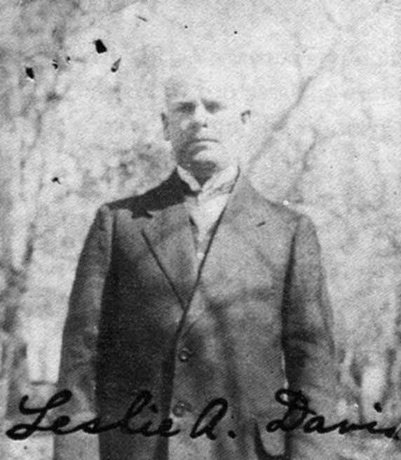Chaos and horror are all over Afrin as Erdogan vows to expand into Iraq. 167,000 people have already fled the city and Turkish troops have already killed over 200 civilians
By Walid Shoebat and Theodore Shoebat
Turkey’s expansion continues after it has invaded Afrin in northern Syria, with Erdogan declaring that Turkish forces will expand deeper into Syria and eventually into Iraq. The chaos that will only intensify can be seen in howTurkish backed militias are acting in Afrin. Syrian rebels, backed by the Turkish government, indulged in their greed in Afrin by looting and stealing. This is after a two month long battle over the town. The Turkish backed militia men repulsed Kurdish forces out of Afrin, and then they began to steal private property, and loot political and military sites. Some locals have recounted on how these rebels utterly stripped their homes of their belongings.
According to Turkish photographer Bulent Kilic, reporting for Agence France-Press, thieving and looting abounded in the town of Afrin. He recounted on how he saw hundreds of rebels more fixated on pillaging than on acting gleeful of their victory over the Kurds.
“They are looting everything; goods, animals, goats, even pigeons,” Bulent Kilic said. “I’ve been in war zones for many years now. Two, three guys looting, it happens. I didn’t even take much notice at first. But then I saw that they were in such a hurry to take everything from this city.” Ibrahim Kalin, a spokesman for Turkish President Recep Tayyip Erdogan, stated that apparently these rebels have not been following orders. Last week the UN stated that it had reports on rebels looting the homes of people who fled Afrin.
On Sunday evening there was a traffic jam that blocked the road heading towards Afrin, with cars going into the town and returning to the adjacent town of Azaz, filled with stolen goods. The thievery is so horrendous that many of Afrin’s residents are in fact trying to return to protect their homes and businesses.
According to Reuters, Erdogan boasted of the conquest of Afrin, saying: “Units of the Free Syrian Army, which are backed by Turkish armed forces, took control of the center of Afrin this morning.” He went on to say that a “large number” of Kurdish fighters had “fled with their tail between their legs”.
“Massacres”
The YPG has stated that Kurdish fighters evacuated the remaining civilians “because of massacres” being done by Turkish forces and their rebel allies. Marixie Mercado, a spokeswoman for the U.N. children’s agency, recounted how people arriving in shelters in nearby Nubul spoke of “running in the face of shelling, sleeping in the open, being separated from their families”.
On Friday Turkish forces invaded three more villages in Syria’s northwestern Afrin, Anadolu Press reports. According to the report Turkish forces took Farfirtin, Burjke and Kabashin.
So bad is the violence and chaos in Afrin that around 167,000 people have fled Afrin. Jens Laerke, spokesman for the United Nations humanitarian agency, reported: “The estimate now is 167,000 people have been displaced by hostilities in Afrin district”. Laerke further says that between 50,000 and 70,000 civilians are still inside the city. Elizabeth Hoff of the World Health Organization recounted on the horror that has come about in Afrin: “Children, women, and men have undertaken harrowing journeys to flee Afrin and need urgent health assistance. Our staff have met civilians who reported walking for 36 hours to reach safer areas”.
Erdogan said on Friday that “Turkey will not step back in Syria,” and recounted his conversations with both president Trump and president of Russia, Putin:
“Last night I spoke with U.S. President Trump on these issues. I discussed the same things with Putin two days ago. I told them: ‘We won’t take steps backward from here. We are on the side of the suffering and the oppressed’”.
State Department spokeswoman Heather Nauert said at a press conference:
“U.S. forces are located in Manbij. We have made it very clear with the Turkish government that we will continue to operate there”
There are people who are expressing their concern that the American and Turkish forces are going to end up in some sort of gun battle in Syria. In the context of the current situation in Syria, do you know what is going to happen between American and Turkish troops? Nothing. Even during World War One, the Americans never declared war against the Ottoman Empire. Turkey right now is in a proxy war with Russia over Syria, and the United States is in a rivalry with Russia. The US is allowing Turkey to expand itself.
On Monday, Erdogan affirmed that the conquest of Afrin marked a stage of great importance in the policy of Turkey, and stated that Turkish forces are going to expand further into Kurdish controlled towns in northern Syria, and eventually into Iraq. Erdogan says: “Our target is not invasion. Our target is to clear the terrorists”. ‘Fighting terrorism’ is quite the popular excuse that governments use to hide policies of expansionism. And that is exactly what Turkey is doing.
Turkey wants to conquer territory in the Middle East, because Turkey wants to bring back its Ottoman Empire. Syria is enraged by this, because the Syrians know that this has nothing to do with fighting terrorism and everything to do with conquest. Syria’s Foreign Ministry sent two letters to the United Nations, calling Turkey’s occupation of Afrin “illegal” and that it “contradicts the principles and purposes of UN Charter and international law … The Turkish practices and attacks not only threaten the lives of citizens and the unity of Syrian territory and people, but also prolong the war on Syria”.
Before, Syria had to deal with ISIS; now that ISIS is more or less contained, Syria has to deal with an even much greater threat: Turkey, a first world Islamic country that produces 50% of its own military technology. One report says that over two hundred civilians have already been slaughtered by Turkish forces. As we read in a report from Rudaw:
“Local health authorities have reported 212 civilian deaths, Angela Rasho, co-chair of Afrin’s Health Council, said in a press conference on Sunday.”
Given Turkey’s history of genocide and massacres, we should not be surprised, in the very near future, to hear in the news about bloody butcherings of civilians by the Turkish military and their militias.
The Armenian Genocide
The Russians defeated the Ottomans in the Battle of Sarikamis (which took place from December 1914 to January 1915), in north-eastern Turkey, in which 60,000 Turkish soldiers died. Before and after this time, from October 1914 to May of 1915, a horrific plague hit north-eastern Turkey, and around 150,000 soldiers and civilians died from disease. The disease’s spread was accelerated by soldiers infested with typhus infected lice and flees, going to villages looking for food, spreading the disease to civilians. The levels of infection reached epidemic proportions in the beginning months of 1915.
In Erzurum, every school, mosque and government building was forced to become a medical center. Up to a thousand people were being admitted every day, with the entire number of sick patients reaching a maximum of 15,000 during the worst time of the crises. At the height of the epidemic, Medical Corporal Ali Riza Eti, was commissioned to lead the Erzurum military hospital.
During this time Eti saw something that drove him to a rage against the Armenians. Although Eti already hated Armenians — reporting on murders done by Turkish soldiers against Armenian Ottoman soldiers during the battle of Sarikamis with glee —, what he saw in his time in the hospital, he used as a justification for outright cruelty. Eti met a wounded soldier who told him how after he was evacuated from the frontline of the battle, he was abandoned by an Armenians orderly in the transport corps. The Ottoman soldier was left abandoned in the ice cold wilderness, and after two days he got frostbite in both of his hands and feet. Doctors in the Erzurum hospital tried to save the soldier’s life, amputating his limbs, but this did not save him and he died the next day.
Eti used this story to justify his own hatred against Armenians and began to do all sorts of inhumanities. “I dispatched three Armenians,” wrote Eti, “one from Van and one from Diyarbakir, to be stripped and robbed [i.e., by rural marauders, who usually killed their victims]. This is what you call Turkish revenge,” he wrote with dark satisfaction. “And I assign the most dangerous tasks to Armenians orderlies,” Eti wrote in glee. The story of Eti reflects the strategy of scapegoating: use events and propaganda to justify racism and genocide. It was evil for the Armenian to abandon the Turkish soldier, but it was also evil for Eti to use this story as a way to justify cruelty. It was evil for Amnon to rape Tamara, but it was also evil for Absalom to try to overthrow the kingdom of David. The Turks also used the fact that many Armenians — understandably — sided more with Russia than they did the Ottoman empire, to portray them as traitorous.
The Armenian population in the Ottoman Empire was concentrated in three very volatile areas: the highest population of Armenians were in Istanbul; the second area was Cilicia, and the third was in the Caucasus. Grigoris Balakian was an Armenian priest who survived the Armenian Genocide. He warned against the nationalism that he saw raging amongst the Armenians, but believed that it was more of a threat than a help. “Caught up in their nationalist sentiment,” wrote Balakian, “they were loath to miss this unique opportunity to redress the wrongs committed by the Turks against the Armenian people”.
Armenian activists were suspected of helping the Allies during World War One. The nationalism of the Armenians, their siding with Russia and the Entente during World War One, was all used as propaganda to justify the genocide inflicted upon them. We do not write this to support such pretexts, rather the contrary: we write this as an example, that governments, when they commit genocide, do not do so outrightly, but first disseminate propaganda in order to get the populace to be desensitized to the idea of the extermination of human beings.
There were Armenians who were convinced that if they helped the Ottomans to go against Armenian militias, that they would be spared from the policy of extermination. In February of 1915, a desperate group of Armenian notables from Zeytun reported to Ottoman authorities on Armenian activists planning a revolt. Ottoman troops overran Zeytun and seized every Armenian they found and deported them to Konya, where they were left homeless and with little to no food. 7,000 Armenians were homeless in Konya, while 1,500 Armenians in Konya starved to death.
When the Entente invaded the Dardanelles in April of 1915, with the aim of invading Istanbul, the Young Turks believed that the Armenian population would act as agents for the British and the French. Two hundred and forty Armenian journalists, politicians, nationalists and clergymen were arrested in an evening raid, on April 24th. One of those arrested was the priest, Grigoris Balakian. The prisoners were forced into a “blood-red bus” and they were made to travel by ferry from the Asian district to the European side of Istanbul. “The night smelled of death; the sea was rough, and our hearts were full of terror.”
One of the centers of the genocide was the town of Van, in the eastern part of Anatolia, where Ottoman troops and Kurdish fighters systemically looted and slaughtered Armenians. When Rafael de Nogales Méndez, a Venezuelan adventurer who fought for the Ottoman Empire, demanded from an Ottoman official that he stop the killing, the official responded “that he was doing nothing more than carry out an unequivocal order emanating from the Governor General of the province [i.e., Cevdet Pasha] … to exterminate all Armenian males of twelve years of age and over”.
The Russians invaded Van to defend the Armenian militias who were fighting against Ottoman forces. The Russians drove the Ottomans back, and Cevdat Pasha ordered all the Muslims of Van to evacuate the city, on May 12th, 1915. But the Turks did not remain stagnate. They hit the Russians and the Armenian militias with everything they had. The bombardments were so heavy that the Russians retreated. The Armenians, knowing what brutality came their way when the Turks would return, fled as well, and around 100,000 Armenians followed the Russians. Fighting did not end there. Russians and Turks continued to kill each other over Van. The town switched occupiers three times, until the Russians finally seized it and kept the town for themselves in the autumn of 1915, by which time very few Armenians were left alive.
What is very interesting is how this story parallels with the current era. Today the Turks and the Russians are competing over Syria. Turkey has backed terrorists who kill Christians, and supported the ISIS militants when they invaded the Armenian town of Kessab in 2014. The Russians entered expressing interest in defending Christians from persecution, just as they did when they invaded Van in 1915 to fight the Ottomans.
Russia, back in World War One, aspired to invade Turkey and take Constantinople because it was originally the holy city of Eastern Christianity. Before World War One, the Ottomans had seven wars with Russia, and lost each one. The Ottomans were being crushed by the Russians in the First World War, until of course the czar was overthrown and the Bolsheviks took over the Provisional Government of Alexander Kerensky. So it looks like we are seeing the beginning stages of a war between Russia and Turkey, with the Russians still aspiring to take Constantinople, and the Turks still wanting victory over Russia.
In the Armenian Genocide, all males aged twelve and older were ordered to be murdered. Women and children were escorted to the dreaded and soulless Dayr al-Zur (Syrian desert), and to Mosul. As the helpless Armenians were being taken from town to town, the sick, the infirm and the elderly were butchered as they fell behind. Armed gangs also did their own bloody massacre, as the policy of genocide gave them license to satisfy their bloodlust. The Armenians of Erzurum and Erzincan were among the first to be deported in May 1915, and forced through the horrid death march.
The Turks made them march for two months, and brought them to the town of Harput where they were butchered by Kurds. “There are very few men among them as most of them have been killed on the road,” wrote the American consul in Harput, Leslie Davis. “The system that is being followed seems to be to have bands of Kurds awaiting them on the road to kill the men especially.” The women were “almost without exception ragged, filthy, hungry and sick. That is not surprising in view of the fact that they have been on the road for nearly two months with no change of clothing, no chance to wash, no shelter and little to eat.”
Women who swarmed to the guards to beg for food were bludgeoned with clubs “hard enough to kill them.” Davis went on to say, almost coldly: “By continuing to drive these people on in this way it will be possible to dispose of all them in a comparatively short time… The entire movement seems to be the most thoroughly organized and effective massacre this country has ever seen.” In June of 1915, Talat Pasha declared that the genocidal deportation policy applied to “all Armenians without exception” in all of the eastern provinces of eastern Anatolia. “We were living through days of such unheard-of-horror, it was impossible for the mind to fully comprehend,” recalled Father Grigoris Balakian. “Those of us still alive envied those who had already paid their inevitable dues of bloody torture and death. And so we survivors became living martyrs, every day dying a few deaths and returning to life again.”
Balakian was deported to the central Anatolian town of Cankiri, north-east of Ankara. Here Balakian strived to save his brethren. When Talat decreed that all Armenians had to be deported, Balakian bribed the local officials of Cankiri with 1,500 pieces of gold to spare the small group of Armenians who lived there. The bribe spared Balakian and the local Armenians from death for seven months. But they were still forced to enter Dayr al-Zur in February, 1916, where they saw the endless downward spiral of human evil.
As Balakian was walking through the arid desert, he saw a trail of countless human bones. “Bey,” Balakian asked Captain Shukri, “where have all these human bones along this road come from?” Shukri responded: “These are the bones of the Armenians who were killed in August and September. The order had come from Constantinople. Even though the minister of the interior [i.e., Talat] had huge ditches dug for the corpses, the winter floods washed the dirty away, and now the bones are everywhere, as you see”.
“Upon whose orders were the massacres of Armenians committed?” Balakian inquired. “The orders came from the Ittihad [i.e., Unionist] Central Committee and the Interior Ministry in Constantinople,” Captain Shukri explained. Shukri recounted to Balakian of how thousands of men were hacked to death, of how 6,400 Armenian women were methodically robbed of their belongings and butchered along with their children. Shukri even bragged to the priest of how he oversaw the slaughter of 42,000 Armenians.
Balakian beheld the utterly nightmarish reality of the genocide: endless human corpses, the cries of victims so starved that they begged for food, and the despair of those who had converted to Islam to save their own lives. So grieved was Balakian the he even thought about suicide. When he and his fellow Armenians were confronted by an armed gang, they agreed to jump into the Halys River which was nearby. “Surely this deep grave of tens of thousands of Armenians would not refuse to take us too into its flowing turbid currents … and save us from harrowing and cruel deaths, at the hands of these Turkish criminals,” he recalled. They would have committed suicided, if it wasn’t for Balakian who negotiated the caravan to move past the armed gang. Balakian would write this description of the horrors that he saw:
“Thousands of families put on the road from Aleppo, to be sent to Der Zor; of these, not even five percent reached Der Zor alive. because bandits in the desert… in groups on horseback and armed with spears, attacked these defenseless people; they killed, they abducted, they raped, they plundered, they selected those appealing to them and carried them off, subjecting those who resisted to horrific torture, before picking up and leaving. Because it was forbidden and impossible to turn back, whose who survived had no choice but to go forward and were subjected to new attacks and plundering. Not even five percent reached Der Zor.”
What is quite telling is that Balakian recounted about how the German soldiers, who were assisting Ottoman forces in their war against the British, French and Russians, were just as hostile against the Armenians as the Ottoman troops (see Rogan, The Fall of the Ottomans). When discussing the Armenian Genocide, what almost no one ever talks about is how Germany played a huge role in the crime. The German general Hans von Seeckt, wrote to Berlin when all of the carnage was taking place:
“It is an impossible state of affairs to be allied with the Turks and to stand up for the Armenians. In my view, any consideration, Christian, sentimental or political, must be eclipsed by its clear necessity for the war effort.”
The Germans supported the Ottomans in their atrocities, and enabled the Turks to retake the Russian controlled parts of Armenia through the Brest-Litovsk meeting of 1917 in which the Bolsheviks gave up those areas to the Ottomans. Once the former Russian controlled areas of Armenia were given back to the Turks, they commenced the slaughter of the Christians. The Sufi Turk and the Darwinist German, alongside the Bolsheviks, murdered the Armenians. The martyrs of Armenia were sacrificed as Christ was sacrificed. It is no wonder that Father Balakian called the genocide “the Armenian golgotha.”














Comments are closed.